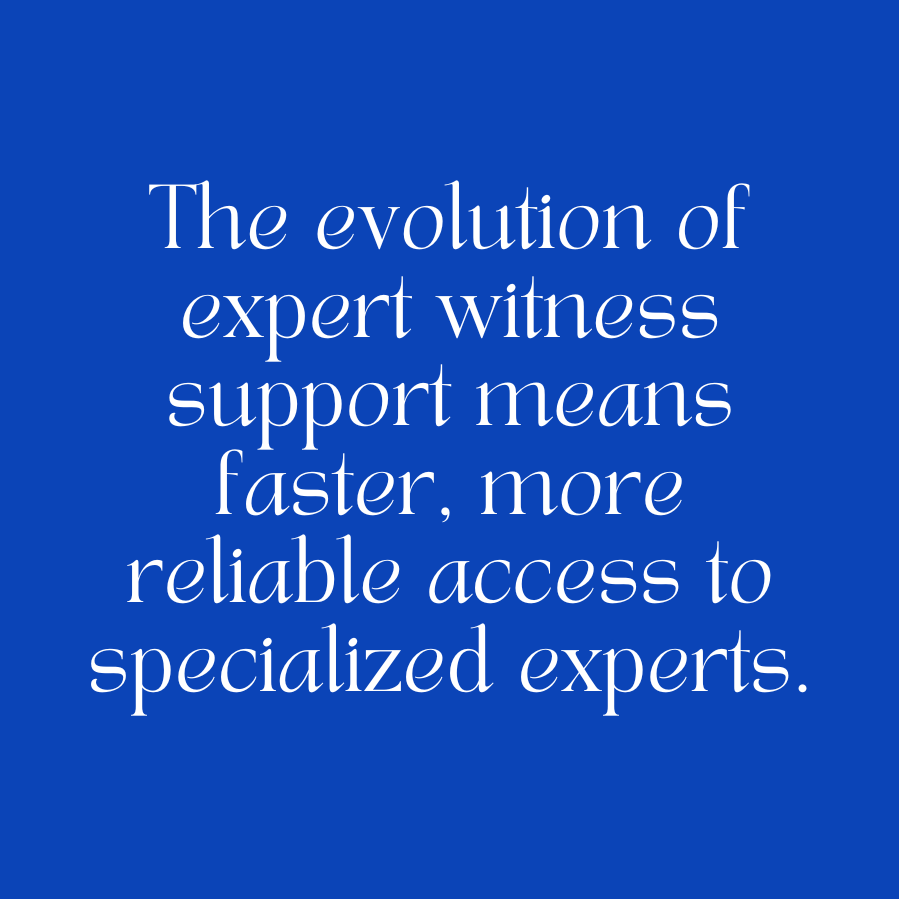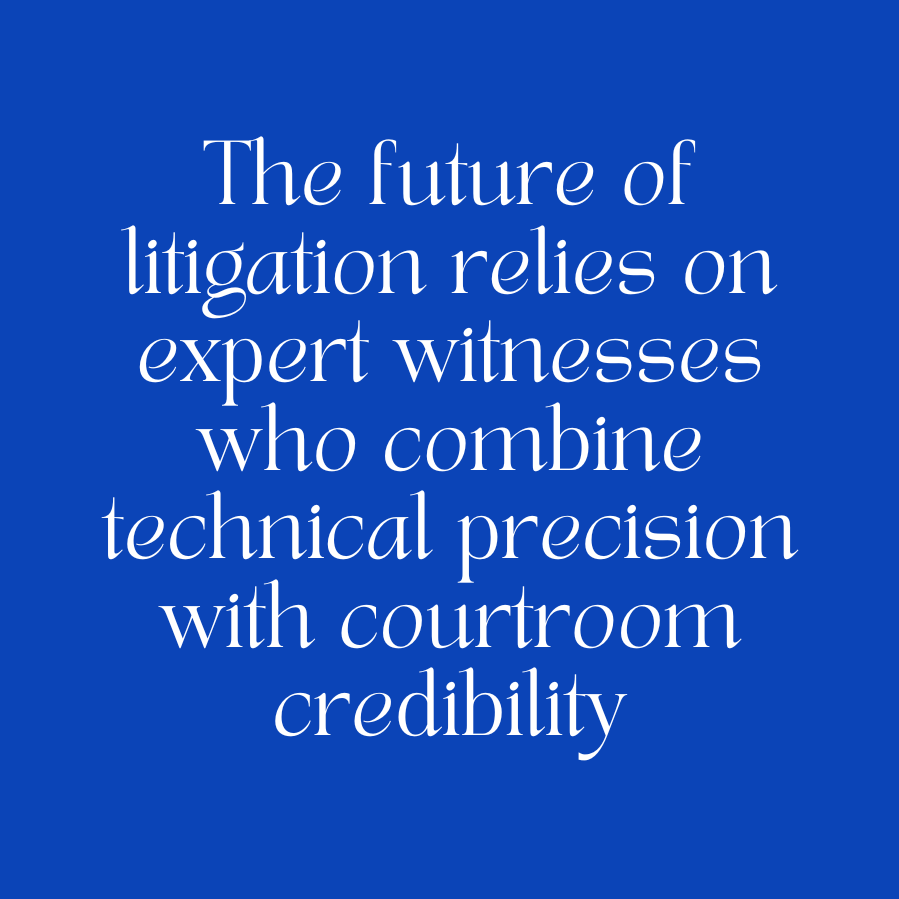The Evolution of Expert Witness Testimony in Litigation: A Journey Through Time
As I sat in a modern courtroom last week, watching an expert witness seamlessly present complex DNA evidence through an interactive 3D visualization, I couldn’t help but reflect on how far we’ve come. If you’ve been practicing law for more than a decade, you’ll remember the days of overhead projectors, paper charts, and hours spent manually combing through physical documents. The transformation in expert witnesses isn’t just about technology – it’s about how we’ve revolutionized the way we tell our clients’ stories in court.
A Tale of Two Testimonies: Then and Now
Let me share a compelling example that illustrates this evolution and why expert witness services are vital now. A medical malpractice suit hinged on proving that a series of subtle diagnostic errors led to a catastrophic patient outcome. Here’s how this same case would have played out in two different eras:
1995 Approach without Expert Witness Services
The medical expert would have arrived with:
Stacks of medical textbooks
Static X-ray films
Hand-drawn diagrams
Written statistical analyses
The testimony took three full days, and the jury struggled to grasp the complex medical concepts.

Despite the expert’s credentials, the technical details were likely lost in translation.
2025 Approach
In a modern case, the medical expert would leverage:
Interactive 3D anatomical modeling
Real-time data analytics
AI-powered pattern recognition in medical records
Virtual reality reconstruction of the medical procedure
The result? A clear, compelling presentation that helped the jury understand the causation chain in just four hours of testimony. The case would likely settle.
The Personal Impact on Legal Practice
How This Affects Your Daily Work
As a practicing attorney, you’re likely feeling the ripple effects of this evolution. Remember the last time you had to prepare an expert for testimony? Gone are the days of shipping boxes of documents across the country. Now, you probably:
Modern Preparation Methods
Meet virtually for preparation sessions
Share documents through secure cloud platforms
Record practice sessions for review and improvement
Use AI-powered tools to identify potential cross-examination vulnerabilities
Digital Transformation in Action
Real-World Applications
Let’s be honest – not every case requires cutting-edge technology.

But when it matters, the modern tools at our disposal are game-changing. Think about how you can:
Practical Applications
Use data visualization to make complex financial fraud cases crystal clear
Present accident reconstruction in ways that feel real to jurors
Demonstrate product defects through augmented reality
Show environmental impact through time-lapse modeling
Specific Use Cases
Financial Analysis: Real-time data modeling
Medical Cases: 3D anatomical visualization
Environmental Claims: Geographic information systems
Product Liability: Virtual product demonstrations
The Human Element in a Digital Age
Despite all this technology, the core of expert witness testimony remains fundamentally human. Your expert’s ability to connect with the jury, explain complex concepts in simple terms, and maintain credibility under cross-examination is still paramount. The technology simply amplifies these human capabilities.
A Look Into Tomorrow
The Roadmap of Innovation
As I speak with colleagues across the legal profession, one thing becomes clear: we’re witnessing a carefully staged evolution in expert witness services.

Let me break down what this means for your practice in concrete terms:
Near-Term Transformation (1-2 Years)
You’ll soon see expert witnesses utilizing more sophisticated tools that are already in development:
Advanced video conferencing platforms designed specifically for expert testimony, offering features like multi-angle camera views and real-time transcript generation
AI-powered document analysis tools that can process thousands of pages in minutes, identifying key patterns and inconsistencies
Enhanced security protocols for remote collaboration, ensuring client confidentiality while enabling seamless expert-attorney communication
Automated credential verification systems that can instantly validate an expert’s qualifications and experience
Mid-Range Developments (3-5 Years)
The middle of this decade will bring more substantial changes to how you work with expert witnesses:
Virtual reality courtroom simulations will become standard for witness preparation, allowing experts to practice their testimony in highly realistic settings
Machine learning systems will help predict and prepare for potential cross-examination challenges, significantly strengthening testimony
Interactive 3D evidence presentation will become the norm rather than the exception, particularly in complex technical cases
Blockchain-based credentialing will eliminate disputes about expert qualifications and prior testimony history
Future Innovations (5+ Years)
Looking further ahead, we can anticipate revolutionary changes:
Holographic courtroom presentations will allow experts to create immersive demonstrations of complex concepts
AI-assisted real-time testimony analysis will provide immediate feedback on clarity and jury comprehension
Neural interface technology will offer unprecedented ways to demonstrate expert scenarios
Quantum computing applications will enable complex data analysis that’s currently impossible
This structured timeline does more than just predict the future – it helps you prepare for the changes that will affect your practice.
Understanding this evolution allows you to make strategic decisions about technology adoption and expert witness selection that will benefit both your firm and your clients.
Concluding Thoughts
Having witnessed this evolution firsthand, I can tell you that the future of expert witness testimony is both exciting and challenging. The key is finding the right balance between embracing innovation and maintaining the fundamental principles of effective testimony. As you prepare for your next case, consider how these new tools and approaches might help you tell your client’s story more effectively.